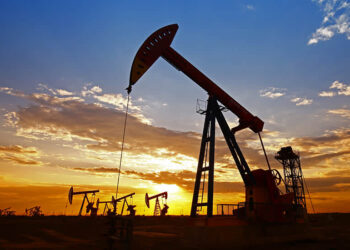Amid market speculation on the path ahead for interest rates, ING believes it’s probably easier to make a case for further rate hikes from the Reserve Bank of Australia (RBA).
According to Robert Carnell, ING’s regional head of research, Asia-Pacific, rate reductions by the end of the year are unlikely although a drop in November inflation is driving arguments for RBA easing by May.
“The November inflation release showed a further decline in the headline inflation rate to 4.3 per cent year-on-year, a sharp drop from the 4.9 per cent rate achieved in October and also a little lower than the consensus estimate of 4.4 per cent,” he observed.
“On the day, there was some weakness in the AUD as the market took the numbers as corroboration for their fairly entrenched view that the Reserve Bank of Australia has finished hiking rates and was well on the way to easing.”
However, ING is not totally convinced, Mr Carnell said, as the annualised six-month figure looks to be higher than the RBA’s inflation target.
He explained the month-on-month rate for the latest monthly consumer price index (CPI) came in at some 0.33 per cent, and if repeated over 12 months, would deliver just over 4 per cent inflation.
“Fortunately, the trend is not quite so high. The three-month annualised rate is only 2.3 per cent, but this incorporates the 0.33 per cent month-on-month decline in October, which will drop out of the trend once January data is available and so will probably push higher again.
“The six-month annualised figure, which dilutes single-month spikes and dips more than the three-month trend, is still running at 4.2 per cent – way above the Reserve Bank of Australia’s 2–3 per cent target.”
To just creep under the RBA’s upper target band, the month-on-month change needs to average 0.24 per cent, he explained.
“So, roughly speaking, for every monthly increase of 0.2 per cent, you can have just under one of 0.3 per cent. Any more than this, then over 12 months, you are going to overshoot the RBA’s target.”
There have been only two occasions when CPI has risen less than 0.3 per cent in the last six months, namely, July’s 0.25 per cent increase and the 0.33 per cent decrease in October which was fuelled by a one-off drop in gasoline prices and some volatility in holiday costs.
ING predicted “a more modest” -0.1 to +0.1 per cent outcome in January compared to last year’s January print of -0.3 per cent month-on-month.
Moreover, the macroeconomy continues to look good, stoking doubts of bringing inflation in on target before the end of 2024, Mr Carnell said.
“Certainly, the GDP figures have been coming down, but these don’t tell the whole story. Employment data remains fairly robust. Most months, the increase in the labour force is greater than the rise in unemployment, which is keeping a lid on the unemployment rate, which at 3.9 per cent is still fairly low,” he said.
“Retail sales have dropped back to about 2 per cent year-on-year but look pretty stable and are certainly not screaming recession or household distress. And with house prices still rising, the single largest source of household wealth is looking strong despite the RBA’s tightening.”
Looking at market pricing, futures markets are pricing in a 50 per cent chance of a cut in May, and by August, the first hike is fully priced in, with a further 25 bp cut fully priced in by December. But this “looks totally wrong”, Mr Carnell said.
“For one thing, and unlike the Fed, the RBA has been quite tentative about its increase in the cash rate. At 4.35 per cent, the cash rate is probably a bit restrictive, but not much. The real rate (ex-actual inflation) is about zero. A properly restrictive rate would be higher.
“On the same basis, the Fed’s real policy rate is more than +200 bp. Consequently, even the arguments for some finessing of the policy rate to a more neutral setting aren’t terribly convincing. At least not until and unless inflation drops much more than it will have likely done by May.”
Given this outlook, ING has tentatively pencilled in just one rate cut, set for the fourth quarter of 2024.
“Even that feels a bit speculative currently, as there is a good chance that inflation won’t have reached the RBA’s target by then. That’s especially true should the current tensions in the Red Sea spill over into higher prices of energy and, indeed, all goods that are normally routed through this stretch of water.
“It is probably easier to make a case for further RBA rate hikes because if monthly inflation averages 0.3 per cent over the second half of the year, not the 0.2 per cent we have optimistically assumed, then inflation will still be around 4 per cent by the end of 2024,” Mr Carnell said.
Earlier this month, the International Monetary Fund said further rate hikes will likely be needed for Australia to tame inflation to the desired range, contrasting many rate cut predictions in 2024.
It believes inflation is not likely to return to the RBA’s target range until 2026 as “persistence in non-tradeable prices driven by demand pressures will keep inflation elevated”.







